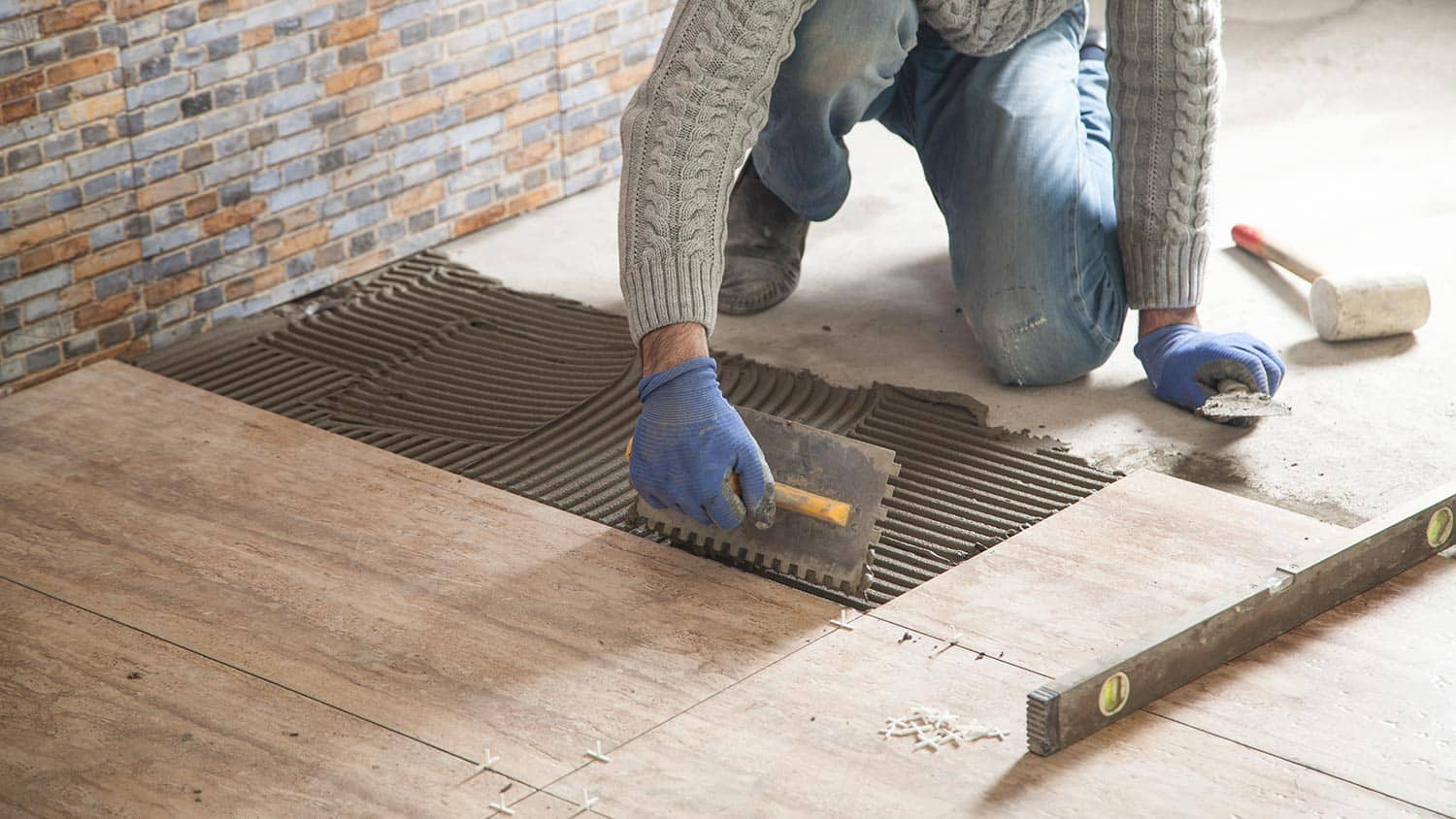Discover the Keys to Perfect Floor Tile Installation Each Time
Achieving flawless floor tile installment might look like a difficult task, usually bring about frustration and flaws that detract from the overall visual. Mastering the art of tile installment includes a series of precise steps and techniques that, when performed appropriately, can result in a seamless and refined finish. From surface preparation to cement application, each stage plays an important role in the final end result of your task. By recognizing the tricks behind each action, you can make certain that your tile setup not just meets yet surpasses your expectations.
Correct Surface Prep Work
Effective floor tile setup hinges considerably on thorough surface area prep work to ensure a remarkable result. The surface has to be tidy, completely dry, and structurally seem to protect against future concerns such as loosened floor tiles or cracked grout.
To ensure proper adhesion, it is recommended to roughen smooth surface areas through sanding or scarifying. Furthermore, applying a guide can enhance bonding between the floor tile and the substratum adhesive. Unequal surfaces ought to be leveled using a self-leveling compound to avoid lippage and make sure a smooth coating.
In addition, checking for potential sources of dampness is crucial, as excess moisture can result in mold growth and damages the ceramic tiles gradually. Making use of a wetness barrier or waterproofing membrane layer in damp locations like cooking areas or shower rooms is essential to protect the tiles from water damages. By thoroughly preparing the surface area prior to floor tile installment, one can produce a long lasting and visually attractive tiled location that will certainly stand the examination of time.

Selecting the Right Adhesive
Picking the proper adhesive is an important step in ensuring the effective setup of tiles. The kind of adhesive you pick will rely on different factors such as the sort of tile, the substratum material, and the area of the setup. There are various types of adhesives readily available in the marketplace, including thin-set mortar, mastic, and epoxy.

Epoxy adhesives are extremely durable and waterproof, making them ideal for locations prone to moisture such as cooking areas or restrooms. They are likewise suitable for setting up glass or metal ceramic tiles. When selecting a glue, make certain to adhere to the maker's recommendations and consider the details requirements of your tile installation project.
Accuracy Cutting Methods
One of the most common tools used for precision cutting in floor tile installation is the ceramic tile cutter. Ceramic tile cutters come in different kinds, including manual tile cutters, electrical damp saws, and portable tile cutters. Manual tile cutters are suitable for straight cuts on ceramic and porcelain floor tiles, supplying clean and precise edges.
In addition, using tools like floor tile scribes or glass cutters can help in racking up and breaking tiles with precision. By understanding these precision cutting strategies, ceramic tile installers can ensure a specialist finish and an aesthetically attractive outcome in their ceramic tile tasks.

Cement Application Tips
When transitioning from accuracy reducing strategies to grout application in floor tile installment, focus to information and method is critical go to my blog for accomplishing a perfect finish. Grout serves not only as a functional component that loads the spaces between ceramic tiles but also plays a significant duty in the general visual of the installation. To ensure an effective cement application, begin by choosing the suitable type and shade of grout that complements the floor tiles. Mix the cement according to the maker's directions, making certain a lump-free and smooth consistency.
As soon as the cement is applied, make use of a damp sponge to clean up the ceramic tiles, making certain not to get rid of grout from the joints. Adhering to these cement application try these out tips will result in an expertly mounted tile surface that boosts the elegance of any space.
Completing Touches and Upkeep
To finish the ceramic tile installation project successfully, interest to detail throughout the ending up touches and routine upkeep is essential. After the grout has dried out and the ceramic tiles are safely in location, the final actions involve guaranteeing that all edges are properly secured.
Routine upkeep is vital to maintaining the appeal and functionality of your tiled surfaces. A straightforward regimen of sweeping or vacuuming followed by mopping with a mild cleaner can aid keep your tiles looking beautiful (tile installation austin). For locations that are often revealed to wetness, such as washrooms or kitchen areas, routine resealing of grout lines is recommended to prevent mold and mildew and mold growth
Final Thought
In verdict, achieving best tile installment whenever calls for attention to detail and appropriate techniques. By concentrating on surface area preparation, picking the correct adhesive, utilizing accuracy reducing approaches, applying grout meticulously, and completing with interest to information, you can make certain a professional-looking outcome. Remember to follow these steps and preserve your ceramic tiles regularly to click to read lengthen their lifespan and keep them looking their finest.
One of the most typical tools used for precision cutting in ceramic tile setup is the ceramic tile cutter. Ceramic tile cutters come in different types, including hands-on ceramic tile cutters, electric wet saws, and portable ceramic tile cutters. Hands-on ceramic tile cutters are suitable for straight cuts on ceramic and porcelain ceramic tiles, giving tidy and precise sides. Additionally, using tools like tile scribes or glass cutters can help in racking up and snapping tiles with precision. By understanding these accuracy cutting strategies, floor tile installers can make certain a specialist finish and a visually appealing outcome in their ceramic tile tasks.